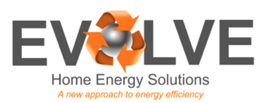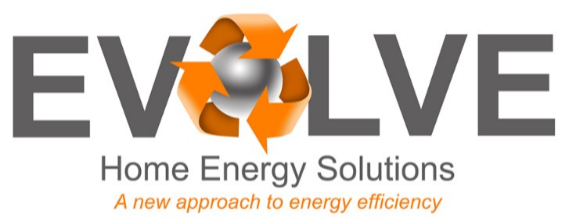Title Page
-
Conducted on
-
Prepared by
- Evolve Home Energy Solutions
- Retrofit Coordination Wales Ltd
- Qualified Gas Safe Registered Engineer
- GreenHouse Energy
- Chartered Surveyor
- Level 5 Retrofit Coordinator
-
Location
-
PAS 2035 Path
-
Is Planning Permission Required for the EEM upgrade ?
-
Please Supply All successful Planning Application or consents
-
Please State The EEM the Design is being completed for?.
- Cavity Wall Insulation
- Loft Insulation
- First Time Central Heating
- Heating/Boiler Upgrade
- Internal Wall Insulation
- External Wall Insulation
- Roon In Roof Insualtion
- Underfloor Insulation
- Flat Roof Insulation
- Window Upgrade
- Door Upgrade
- Draught Proofing
- Other (please State In Notes)
- Party Wall Insulation
-
Please State The Material Cavity Wall Insulation Material
-
Method Statement for CWI installation to PAS 2030 2019 -1. Agree where to position vehicle with client. 2. Remove keys from ignition. 3. Erect suitable physical barrier around work area; display warning notices to restrict access from members of the public. Crew leader/supervisor will knock on all tenants/home owenrs doors to ensure no cracks around window frames, where dust might ingress during works. If there are cracks these will be sealed with masking tape or silicon. 2. Lofts spaces will all be assessed and water tanks jacketed where required. 3. Request building tenants to close windows and external doors to stop dust and reduce noise and vibration nuisance. 4. Cones and safety signage are erected around van and around work area. Mats will be placed over cables and pipes to prevent trip hazard to technicians and tenants. 2. Walkboards and dust sheets will be positioned to prevent damage to lawns and garden beds. Only trained and authorised people erect, use and dismantle ladders and ladder harness safety systems. 2. Visually inspect ladders before use -and ensure ladder check records are current. 3. Ensure walkboards are installed in work area to prevent damage to lawns and garden beds around building. The Contracts Supervisor plans and organises all work at height: access to work area, access equipment, working over or on fragile roofs, ladders, restraint equipment and fall protection equipment. 2. The Contracts Supervisor fully explains the SSoW to the installers. 3. Ladders used for short duration work only, and only where safe. 4. A works partner acts as a 'banks/look out' to warn others of danger. See Cavity Insulation Guarantee Agency (CIGA) Technicians Guide to Best Practice on burning fuel appliances. 2. Check all combustion air bricks/vents are not blocked or covered. 3. Senior installer removes one under floor vent, where existing, to check the type of sleeve. 4. Report any problems to the contracts superior immediately to decide action to take. In vehicle generators are 240 volts. 2. The power must be left in the vehicle. 3. Use good practice with power tools: take breaks, rotate drilling between operatives, keep hands warm. 4. Generators will not be filled whilst running. 5. Petrol generators must be cooled before filling with petrol. 6. Storage of petrol is in approved containers only. 7. Use drip trays to prevent spills. 8. Keep a spill kit in the vehicle if petrol generator is being used. 9. Record capacity of the container if spillage occurs and how much remains. 10. Inform line manager who will calculate the quantity of spillage and report it to the Environment Agency. Route hoses and cable to reduce trip hazards, or cover with a ramp. 2. Drill holes that conform with British Board of Agrements (BBA)/KIWA BDA and system manufacturer. 3. Drill further holes if needed to ensure total fill of wall. . 4. If box test insulation weight is wrong, adjust and re-test until results are correct. 5. Record on Dry Fill sheet. 6. Install cavity barrier (brushes) where necessary. 7. Wear ear defenders, goggles and dust mask when drilling. 8. Drill one complete elevation. 9. Inject into lower holes working upwards.10. Making good on drill holes will be completed as work progresses. 10. Drill other elevations while filling/injecting insulation. 11. Once injection completed, make good holes, using mortar to match existing No fuel burning applicances in court - heated electrically. Therefore no smoke tests required. 2. Complete walkaround of building and check internally and externally no ingress of material or dust. 3. Check cavity width and record on Dry Fill Sheet. 4. Record accurate meterage of the property on Dry Fill Sheet. 5. Check for egress of insulation material into internal spaces Follow a clear-up-as-you-go policy. 2. Store rubbish in vehicle. 3. Waste will be removed from site daily and disposed of at company depot. Sign completion sheet and get customer / on-site contact signature. 3. Follow Leaving Site procedure
- 1. Agree where to position vehicle with client. 2. Remove keys from ignition. 3. Erect suitable physical barrier around work area; display warning notices to restrict access from members of the public.
- 2.Crew leader/supervisor will knock on all tenants/home owenrs doors to ensure no cracks around window frames, where dust might ingress during works. If there are cracks these will be sealed with masking tape or silicon. 2. Lofts spaces will all be assessed and water tanks jacketed where required. 3. Request building tenants to close windows and external doors to stop dust and reduce noise and vibration nuisance. 4.
- 3. Cones and safety signage are erected around van and around work area. Mats will be placed over cables and pipes to prevent trip hazard to technicians and tenants. 2. Walkboards and dust sheets will be positioned to prevent damage to lawns and garden beds.
- 4. Only trained and authorised people erect, use and dismantle ladders and ladder harness safety systems. 2. Visually inspect ladders before use -and ensure ladder check records are current. 3. Ensure walkboards are installed in work area to prevent damage to lawns and garden beds around building.
- 5. The Contracts Supervisor plans and organises all work at height: access to work area, access equipment, working over or on fragile roofs, ladders, restraint equipment and fall protection equipment. 2. The Contracts Supervisor fully explains the SSoW to the installers. 3. Ladders used for short duration work only, and only where safe. 4. A works partner acts as a 'banks/look out' to warn others of danger.
- 6. See Cavity Insulation Guarantee Agency (CIGA) Technicians Guide to Best Practice on burning fuel appliances. 2. Check all combustion air bricks/vents are not blocked or covered. 3. Senior installer removes one under floor vent, where existing, to check the type of sleeve. 4. Report any problems to the contracts superior immediately to decide action to take.
- 7. In vehicle generators are 240 volts. 2. The power must be left in the vehicle. 3. Use good practice with power tools: take breaks, rotate drilling between operatives, keep hands warm. 4. Generators will not be filled whilst running. 5. Petrol generators must be cooled before filling with petrol. 6. Storage of petrol is in approved containers only. 7. Use drip trays to prevent spills. 8. Keep a spill kit in the vehicle if petrol generator is being used. 9. Record capacity of the container if spillage occurs and how much remains. 10. Inform line manager who will calculate the quantity of spillage and report it to the Environment Agency.
- EXTRACTION ONLY Remove 1 brick above DPC, and then remove another single brick approx 3.5metres away horizontally. Repeat this process on each elevation to expose inner cavity and contents. 2. Erect Ladder using slip mat and ladder harness restraint systems. 3. Drill a correct BBA pattern on each elevation. 4. Place vacuum pipes into brick holes above DPC and seal around pipe. .
- EXTRACTION ONLY Place Blow pipe into lowest drill hole and turn on air supply. Rotate pipe clockwise allowing time for product witihn to get agitated and fall down into suction pipe. 2. Work across pre-drilled pattern and start on next rrow of holes higher up elevation. 3. When sufficient space within cavity has been generated replace metal air pipe end with whip fitting. 4. Check results internal to cavity with boroscope to ensure cavity is clear and identify problem areas. 5. Replace air whip to remove pockets of lodged materials. 6. Repeat Step 4 and 5 until cavity is clear. 7. Replace bricks and clear area.
- 8. Leave all guards in place. 2. Wear face mask and ear defenders. 3. Do not stand on polythene bags on insulation as they are a slip hazard (use small step ladder instead). 4. If something drops into the hopper, switch off the machine, disconnect the power supply and retrieve the item.
- 9. Route hoses and cable to reduce trip hazards, or cover with a ramp. 2. Drill holes that conform with British Board of Agrements (BBA)/KIWA BDA and system manufacturer. 3. Drill further holes if needed to ensure total fill of wall. . 4. If box test insulation weight is wrong, adjust and re-test until results are correct. 5. Record on Dry Fill sheet. 6. Install cavity barrier (brushes) where necessary. 7. Wear ear defenders, goggles and dust mask when drilling. 8. Drill one complete elevation. 9. Inject into lower holes working upwards.10. Making good on drill holes will be completed as work progresses. 10. Drill other elevations while filling/injecting insulation. 11. Once injection completed, make good holes, using mortar to match existing
- 10. No fuel burning applicances in court - heated electrically. Therefore no smoke tests required. 2. Complete walkaround of building and check internally and externally no ingress of material or dust. 3. Check cavity width and record on Dry Fill Sheet. 4. Record accurate meterage of the property on Dry Fill Sheet. 5. Check for egress of insulation material into internal spaces
- 11. Follow a clear-up-as-you-go policy. 2. Store rubbish in vehicle. 3. Waste will be removed from site daily and disposed of at company depot.
- 12. Sign completion sheet and get customer / on-site contact signature. 3. Follow Leaving Site procedure
-
Risk Mitigating Controls and Precautions Ladder and Ladder Harness training has been completed by all technicians. Ladders are regularly inspected for defects, signed off Ladder restraint mechanism will be spread to full extent, ladder mats and stand offs are provided and maintained. Ladder harnesses will be used. Fragile surfaces will be crossed using crawling boards with hand rails. MEWPs (cherry pickers, scissors lifts) are only operated by International Powered Access Federation (IPAF) or similar training card holders Fall protection will be used as a last resort. Safe system of work will be put in place. A rescue plan will be devised. Full harness and lanyard will be checked and safety documents available on site for inspection. All operatives are trained in asbestos awareness. If asbestos is suspected to be present or disturbed by the works, the operative will stop and speak to site supervisor/site manager 230 volt supply (blue plug) will be used with a Residual Current Devise (RCD). The RCD unit test button will be pressed to check tool is working correctly. Loads to be carried are assessed for size, shape, weight and how to grip/hold firmly. Find safe method to move the load (eg divide into smaller loads, use trolly/wheelbarrow, avoid twisting and turning when lifting or placeing a heavy load, repeated lifting in short space of time Run cables and leads above head height, over top of doorways and walkways. Keep trailing cables and leads close to walls. Place materials out of walkways, access routes. Check equipment before use and report any damage/breakages if found. Switch off and unplug electric hand tools before adjusting. Unplug power tools not in use. Check whole length of extension cable and connectors for damage. Report cuts in outer cover. Cover cables in path of vehicles with protective ramps and put up ramp signs. Power tools, equipment and chargers to be PAT tested labelled with inspection schedule, monitoring and review dates (NB bettery powered tools do not need a PAT test) Hearing protection will be worn where noise exceeds 80 decibels (dBA). Ear defencers worn if above 85 dBA. Take breaks from drilling, rotate drilling operations with other operatives, keep hands warm Check Data Safety Sheet provided with RAMS for materials used in a task; follow the use and protection instructions on substance packaging. Use only cement/mortar which is before the expiring date. Dispose of hazaardous waste in correctly labelled containers for collection as hazardous waste. Includes Fluorescent light bulbs Oil, oily liquids/aterials to be cleaned immediately if spilled and placed in container for collection as hazardous waste Dispose of hazaardous waste in correctly labelled containers for collection as hazardous waste. Fluorescent light bulbs to be collected in labelled containers and recycled by a specialist waste facility.
-
Floor protection will be used for extraciton system. The flower beds and lawns will be protected usiing walkboards. All technicians should have a duty of care over client property at all times. Additional cones and safety warnings will be used to ensure tenants do not trip. Tenants have been notified well in advance of works and have been advised to stay away from works area as much as reasonably possible. All technicians have a duty of care over tenants whilst on site. Tenants have been informed in good time of works taking place and actions they should take to avoid damage to contents of homes. Crew leader/supervisor will be attempting access to every property to ensure cracks around windows are sealed to prevent ingress of dust and that valuables are removed from external walls prior to works. Will advise tenants in person. Training provided to all technicians in approriate use. Compressor will not be turned on until pipee is in the cavity. PPE - face masks; ear defenders; safety boots; goggles; gloves and hard hats will be worn. Planned work will not go ahead in severe weather conditions.
-
Name of Insulation Company and PAS 2030 2019 Certificate Number
-
Will The Thermal Lance be required to complete the install to PAS 2030 2019 standard?(Pictures Required).
- Yes, Use the Thermal Lance System on the Front Elevation in order to overcome an obstruction.
- Yes, Use the Thermal Lance System on the Rear Elevation in order to overcome an obstruction.
- Yes, Use the Thermal Lance System on the Right Elevation in order to overcome an obstruction.
- Yes, Use the Thermal Lance System on the Left Elevation in order to overcome an obstruction.
- Yes, Use the Thermal Lance System for a cosmetic reason.
-
Does the Property have adequate Combustion Ventilation in place?.
-
Please State the reason for the Additional Ventilation in the notes and select the location of the required Combustion Ventilation. (pictures Required)
- Living Room
- Living Room 2
- Dining Room
- Kitchen
- Bedroom 1
- Bedroom 2
- Bedroom 3
- Bedroom 4
- Bedroom 5
- Bedroom 6
- Other, Please state in notes
-
Does the Property have Adequate Moisture Control/Extraction and ventilation already in place?(Pictures of Present Units Required).
-
Please State Your Design for the Introduction for Adequate Moisture Control (Pictures Required).
- Install a Mechanical Ventilation Extraction unit in the Bathroom
- Install a Mechanical Ventilation Extraction unit in the Kitchen
- Install a Mechanical Ventilation Extraction unit in the WC
- Install a Mechanical Ventilation Extraction unit in the En-Suite Bathroom
- Install a Demand Control Vent in the Living Room
- Install a Demand Control Vent in the Dining Room
- Install a Demand Control Vent in Bedroom 1
- Install a Demand Control Vent in Bedroom 2
- Install a Demand Control Vent in Bedroom 3
- Install a Demand Control Vent in Bedroom 4
- Install a Demand Control Vent in Bedroom 5
-
Please Use this section to state any Property Specific Rectification Work Required to make the property suitable for Cavity Wall Insulation under the guidelines of PAS 2030 2019, Compliance for Guarantee Purposes, BBA requirements and System Design requirements.
-
Please add Pictures of the areas that Require Rectification.
-
Existing Loft Insulation Depth
- 0mm
- 50mm
- 75mm
- 100mm
- 150mm
- 200mm
- 270mm
- 300mm
- 350mm
- 400mm
-
Depth to be added to PAS 2030 2019 specifications(Pictures Required)
- 0mm
- 50mm
- 75mm
- 100mm
- 150mm
- 200mm
- 270mm
- 300mm
- 350mm
- 400mm
-
Method Statement for Loft installation to PAS 2030 2019- 1 Agree where to position vehicle with on site contact on Sustain access sheet. 2. Avoid blocking other drivers. 3. Do not park on grass/verges. 4. Take keys out of ignition or lock vehicle if parked out of sight. Check with Sustain contact (see above) that the loft space has been cleared and any defects identified in the survey have been put right. 2. Notify occupants of works Re site specific risks, the Contracts Supervisor will devise a SSoW (ref control measures on site specific RA). 2. Brief installers on SSoW. 3. Specify class 1 Industrial steps to access the loft space. Explain the works to be done to on-site contact. 2. Advise of risks, eg dust sheet trip hazards. 3. Request ocupants stay clear of work area. 4. Cordon off and erect signage around access to work area if needed. 5. Lay dust sheets around loft access trays and front door. 6. Stack materials at top of stairs without blocking emergency route and allow safe access for occupants. 7. Use safe manual handling techniques when handing timber boards (if used) through loft trap. Lay insulation over existing to thickness specified on survey (including allowing access routes to services). 2. Lay insulation tightly, with closely butted joints. Leave no gaps. Extend insulation over the wall plates. 3. Do not lay insulation under tanks. Ensure the eaves vents are free of obstruction. 4. Lay insulation 75mm from recess light fittings and flues which penetrate the ceiling face. 5. Insulate the loft trap with encapsulated insulation (vented polythene) 250mm thick, and draught-proof with hook and eye fasteners. 6. Do not lay insulation over High-ampere electric cables. 1. Bag up waste in polythene and remove from roof space. 2. Lift dust sheets and any debris. 3. Remove on a daily basis to the Company vehicle. 4. Dispose of waste at the Company depot. 1. Meet with client to check works. 2. sign completion sheet and get customer / on-site contact signature. 3. Follow Leaving Site procedure above.
-
Material to be Installed
-
Does the property have any Sloping Ceilings?(Pictures Required)
-
Please State how the sloping ceiling is being insulated?
- Install Mineral wool fibre insulation, ensuring an air gap is left present to supply ventilation at the eaves. install additional polystyrene vent wedges at the closest possible felt overlap to the eaves to compensate for the reduction in air flow from the eaves.
- Install Phenolic Board insulation, ensuring an air gap is left present to supply ventilation at the eaves. install additional polystyrene vent wedges at the closest possible felt overlap to the eaves to compensate for the reduction in air flow from the eaves.
-
Spot Lights Present?(Pictures Required).
-
How will The spot lamps be protected?
- Install Heat proof spot lamp covers to all spot lights.
-
Please state the design for the Loft Hatch.(Pictures Required).
- Insulate the Hatch and apply draught proofing to the opening, Attach hooks and eyes to prevent lifting and create a good seal.
- The loft Hatch is Pre-Insulated and draught proofed to a good standard.
- The property has a loft ladder, therefore it is not possible to insulate the hatch as this would compromise the function of the ladder.
-
Please State any Specific Issues that require additional design(Pictures Required)
-
Installation Method
- Bespoke Install Please supply Detail
- Safety footwear/Eye Proctection/P3 Face Mask/ Bump Cap/Gloves/Knee Pads must be worn before removing the loft hatch.1 Ensure loft is clear and accessible. 2 Place crawl boards as required. Light work area as required. 3 - Remove any debris or obstructing articles. 4 - Smoke Alarms/Boilers/lnverters etc must be protected and isolated where applicable in the loft space during installation of insulation.The protection cannot remain in place when the loft is unoccupied/overnight and must be removed after the work is completed when any items isolated can be switched back on. (The occupant should be made aware that equipment is to be isolated and that responsibility for any problems after reconnecting the supply will rest with the occupant. Boilers in lofts would usually be quite new and therefore are likely to have electronic ignition which should restart when required.) 5 - Roll out loft insulation to required depth per joist, avoiding any (1) ventilation openings; (2) protruding light fittings - leave 15cm gap around all edges of hoods or install a heat shield(3) High Ampere cables or above must run over loft insulation. 6 - All pipework in loft space should be lagged with a BBA approved product. 7 Any water tanks (Hot or Cold) in the loft space should have insulating jackets fitted. Walkways need to be laid to any water tanks in loft space and properly affixed. 8 - Visual inspection of works to ensure loft insulation has been cross-laid and crossbutted. 9 - Fix at least 2 "DANGER" notices to roof trusses within sight of loft access point. 10 - Complete and commission job - Affix rubber draught-proofing strips to all edges of the loft hatch and insulate loft hatch and ensure insulation on loft hatch is not compressed. Affix "Hook and Eye" or alternative, suitable, fixing mechanism to loft hatch. 11 - Handover to customer.
-
Name & Gas Safe Registration of qualified person completing the design?
-
PAS 2030 2019 Certificate Number?.
-
Pre Heating Type?
- Mains Gas
- Oil
- Bulk LPG
- Bottled LPG
- Electric Room Heaters
- Electric Storage Heaters
- None
-
Post Heating Type?
- Mains Gas
- Oil
- Bulk LPG
- Bottled LPG
- Electric Room Heaters
- Electric Storage Heaters
- None
-
Installation Design
-
Name & Gas Safe Registration of qualified person completing the design?
-
PAS 2030 2019 Certificate Number?.
-
Heating Type?
- Mains Gas
- Oil
- Bulk LPG
- Bottled LPG
- Electric Room Heaters
- Electric Storage Heaters
- None
-
Installation Design
-
Name of Installation Company and PAS 2030 2019 Certificate Number
- Evolve Home Energy Solution Ltd
- Greenhouse Energy LTD.
- Eage Energy Ltd.
- A & D
-
Please State the full design for the Installation:
Sequencing of EEM's
-
Please State the Sequence in which the EEM's are to be installed along with the Installation Company responsible for each element.
Untitled page




















